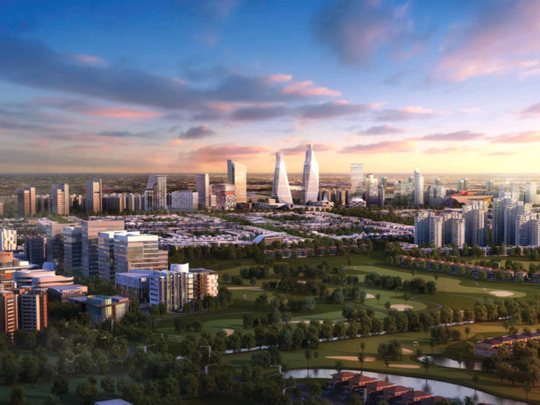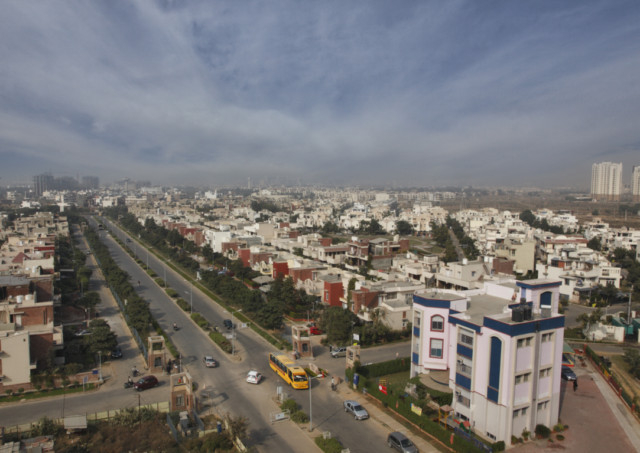
Buying apartments, plots or villas in integrated townships is considered the best bet for real estate investors because of a low cost of entry yet great potential for price appreciation. Sensing demand for such projects — which offer convenience, affordability and lifestyle — among resident and non-resident Indians (NRIs) alike, developers are now building little cities all over India.
According to a report by the multinational financial and professional services company Jones Lang LaSalle, most metros and satellite cities are likely to see increased launches of integrated township projects. Tier-two cities and state capitals, where people migrate to from smaller towns and cities, are also likely to see more such projects. The report also says a few hundred such projects are expected to be in different stages of development over the next five years.
“India lacks the infrastructure to sustain growth. In a country as big as India, these large developments are needed to push growth,” Anuj Puri, Chairman and Country Head, Jones Lang LaSalle India, tells GN Focus.
“People grow weary of the chaos because of unorganised and unplanned real estate development. Integrated townships offer a way to live with lower stress levels and a much higher degree of dignity and convenience.”
The community living trend has also picked up considerably. “They are sub-cities wherein residents can live, work, recreate and have access to health and education facilities,” adds Puri. “They make for a better standard of living and reduce pressure on the infrastructure of the parent city.”
Government support
Along with the central government, various state governments have begun to encourage developers to invest in planned townships by relaxing regulations. Such steps have driven growth in the segment.
“Uttar Pradesh (UP) was the first state to come up with a comprehensive integrated township policy in 2003,” says Pranav Ansal, Vice-Chairman and Managing Director, Ansal Api, a leading real estate developer. “Though many townships have been developed in the northern states of Haryana and Rajasthan, big-ticket investments with government support are easier in UP because of the duly defined policies.”
The central government has allowed External Commercial Borrowings, a tool used by Indian companies to access foreign money, to develop integrated townships, making it easier for realty groups to launch such large-scale projects.
According to a recent report by management consulting firm McKinsey & Company, 590 million people will live in Indian cities by 2030, nearly twice the population of the US. Some 700-900 million square metres of commercial and residential space needs to be built.
“Given the pressure on the infrastructure of our cities, integrated township projects are the next phase of residential dwelling in India,” says Brotin Banerjee, Managing Director and CEO, Tata Housing.
“Lack of availability of land in the city centres has also been one of the key reasons developers are now moving towards suburban locations for new developments.”
Suburbanisation is another trend that is fast catching on in India, with people wanting to stay away from the hustle and bustle of the city yet connected, with better and affordable amenities.
“Our research shows affluent Indians are increasingly moving to spacious suburbs in pursuit of a better quality of life, much like their American counterparts did way back in mid-1940s,” says Banerjee. “In 1960, the percentage of Mumbaikars living in suburbs was just 32 per cent, now it is 80 per cent. Similar trends have also emerged in Delhi National Capital Region and Kolkata.”
Furthermore, skyrocketing property prices in metros are also forcing home buyers to look for residential solutions on the outskirts.
Easy accessibility to a range of amenities — from health care, retail and education to lifestyle and facility management — makes township projects a popular option. “It presents a perfect solution for any modern professional working in urban centres,” says R. Nagaraju, Vice-President, Corporate Planning, Unitech, a leading real estate developer.
Integrated solutions
NRI buyers are now showing greater preference to planned townships over small developments in city centres.
“India has always been a favourite investment option for the NRI community not only because of better returns on investment but also for the continued growth in the economy, which has brought back a large number of NRIs to set up businesses,” says Ananta Singh Raghuvanshi, Director — Sales and Marketing, DLF, a commercial real estate developer.
Says Sunil Jaiswal, CEO, Sumansa Exhibitions, organisers of the Indian Property Show in Dubai: “The demand for luxury projects is also at an all-time high among UAE NRIs.
“NRIs who are relocating to India are eager to invest in luxury houses that offer all premium amenities, as they are used to such facilities abroad.”
Township projects also offer prospective buyers with variation in terms of pricing, unit size and amenities. “The devaluation of the rupee has created renewed interest among NRIs to invest in property. We also see a high number of vastly skilled NRIs from the Gulf buying houses in township projects not for investment, but for their families or immediate dependants,” says Alok Anchan, Manager — Business Strategy and Development of realtor Rajesh LifeSpaces.
Despite demand from buyers, experts believe more government support can take the concept to the next level. “The government needs to offer more specific incentives,” says Puri.
“For instance, people who choose to live in environmentally sustainable homes get a lot of benefits in other countries. Such benefits should also be made available to Indians who show interest in living in integrated townships that tend to offer green features in considerable measures.”


















